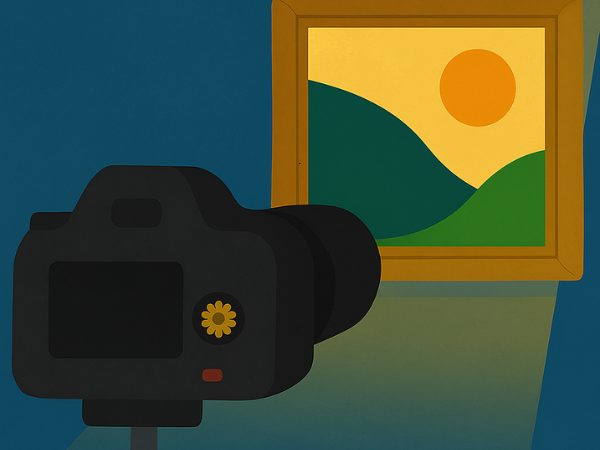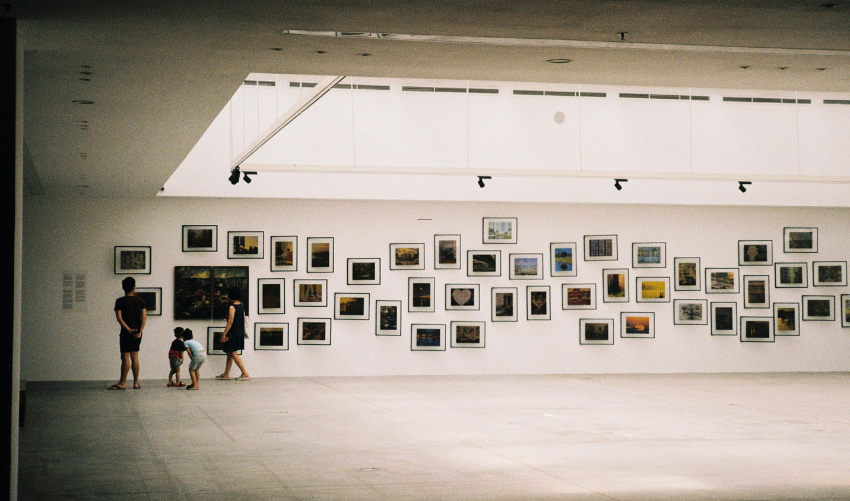Lighting is the foundation of any good photograph, and when it comes to art, it can make or break the image. Harsh or uneven light can distort colors and create distracting shadows.
- Use natural, indirect daylight whenever possible
- Avoid direct sunlight to prevent glare
- Position lights at 45-degree angles to the artwork
- Use diffusers or softboxes for even illumination
By mastering lighting, you ensure that the artwork’s true colors and textures are captured without distractions.
Stabilize Your Camera for Sharpness
Even the slightest movement can blur details in your photo. Since art often contains fine textures and lines, stability is essential.
- Use a tripod for consistent framing
- Employ a remote shutter release or timer
- Rest your camera on a stable surface if no tripod is available
- Keep ISO low to reduce noise
A stable setup ensures that every brushstroke or detail is preserved, keeping the magic of the artwork intact.
Frame the Artwork Correctly
Composition matters when photographing art. Crooked angles or distracting backgrounds can take away from the piece itself.
- Align the camera parallel to the artwork
- Fill the frame with the piece, minimizing background
- Use a neutral backdrop for 3D works like sculptures
- Leave slight margins for cropping later
Proper framing allows the viewer to focus entirely on the art, not on unnecessary distractions.
Capture Accurate Colors
One of the biggest challenges in photographing art is ensuring the colors in the photo match the original. Misrepresentation can diminish the artist’s intent.
- Adjust white balance manually
- Use a gray card for calibration
- Avoid flash, which can alter tones
- Edit lightly to correct color shifts
Accurate color reproduction ensures that the photograph reflects the true essence of the artwork.
Highlight the Details
While full shots are important, detail photography can reveal the craftsmanship and texture that make a piece special.
- Take close-ups of brushstrokes or textures
- Capture unique angles for sculptures
- Focus on signature details or artist marks
- Use macro settings for fine details
Detail shots add depth to your documentation, allowing viewers to appreciate the artistry up close.
Avoid Reflections and Glare
Glass frames, glossy paints, and metallic finishes can cause unwanted reflections. These can obscure the artwork and distract from its beauty.
- Photograph at a slight angle to reduce glare
- Use polarizing filters on your lens
- Remove glass when possible
- Adjust lighting to minimize reflections
By controlling reflections, you preserve the clarity and integrity of the artwork in your photos.
Take Time to Review and Adjust
Rushing through the process often leads to mistakes. Taking time to review your shots ensures you capture the best possible version.
- Check images on a larger screen, not just the camera
- Zoom in to inspect sharpness and detail
- Adjust lighting or framing as needed
- Take multiple shots for variety
Patience in reviewing and adjusting guarantees that your final images truly honor the artwork.
Balance Documentation with Emotion
While technical accuracy is important, don’t forget that art is about emotion. A photograph should capture not just the piece, but also the feeling it conveys.
- Experiment with creative angles
- Use depth of field to add atmosphere
- Include context, like gallery walls or natural light
- Capture the mood, not just the object
Balancing accuracy with emotion ensures that your photos don’t just document the art—they preserve its magic.




